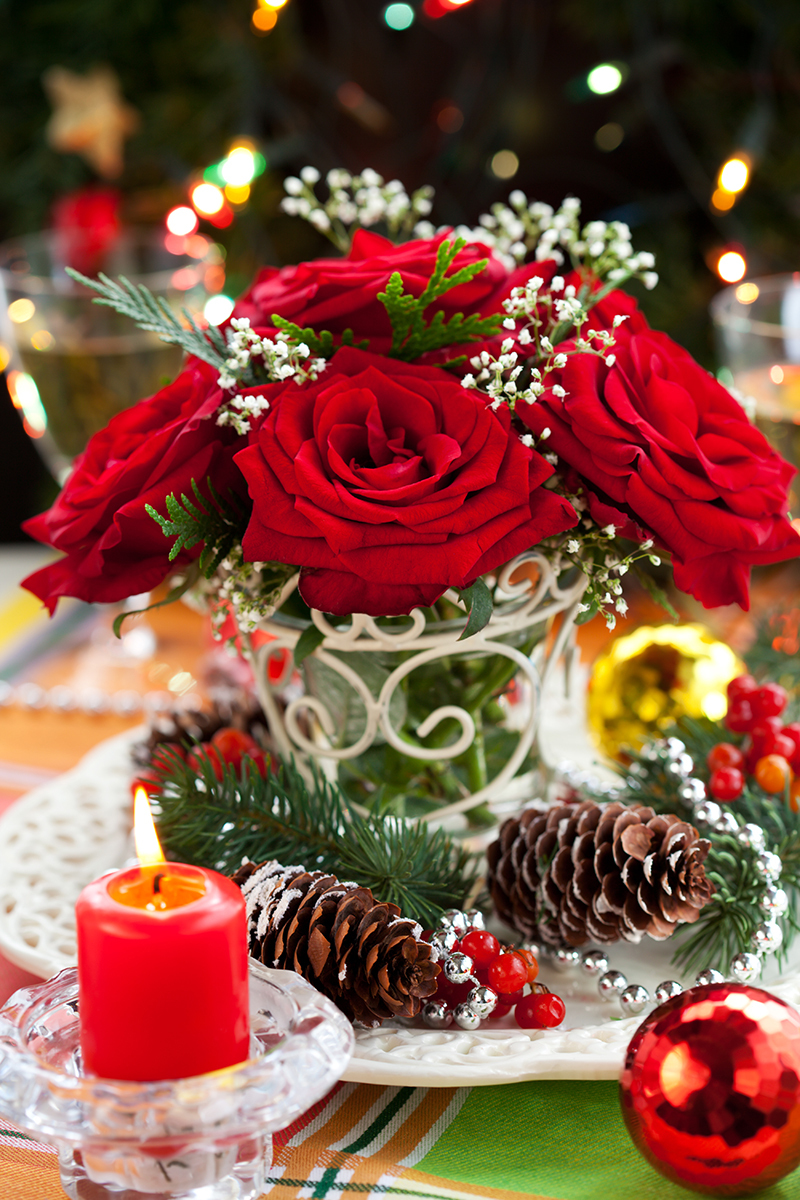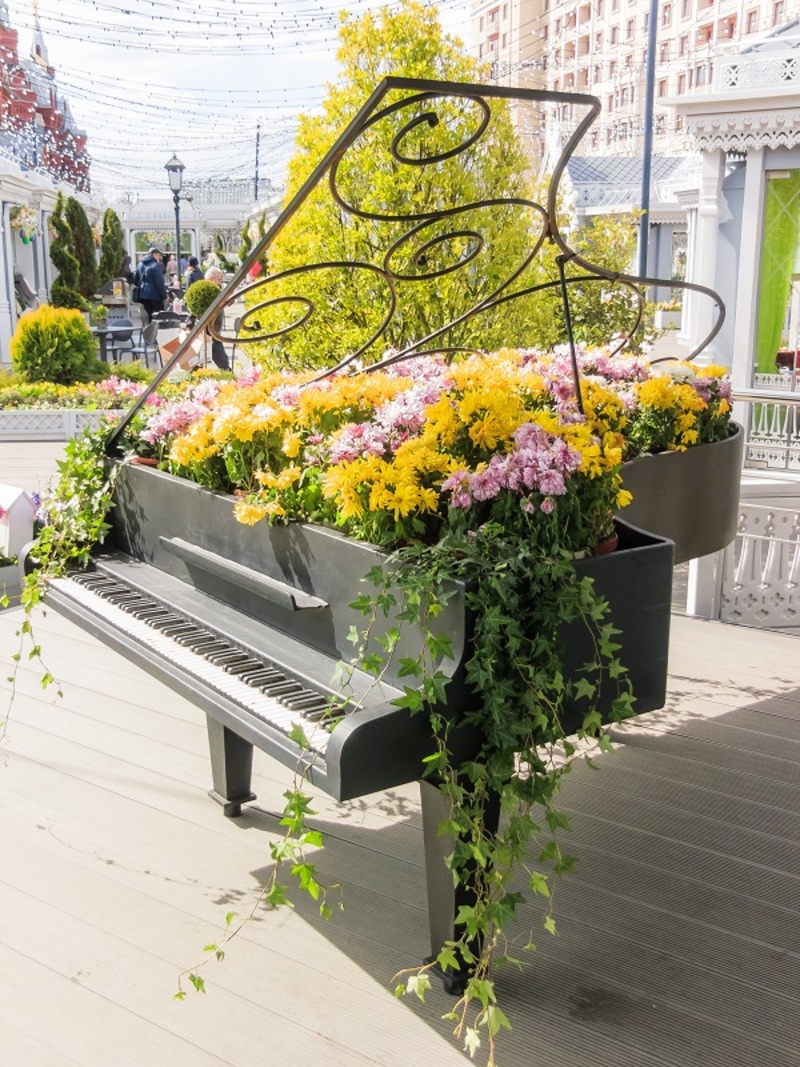How to Help Poinsettias Thrive Longer
Posted on 17/08/2025
How to Help Poinsettias Thrive Longer: An In-Depth Guide
Poinsettias are an iconic symbol of the holiday season, their vibrant red, white, or pink bracts lighting up homes and offices during the winter months. However, helping poinsettias thrive longer than just a few weeks often seems like a mystery to many plant owners. With the right care, your poinsettia can continue to brighten your space well beyond the holidays and even rebloom the following year.
Understanding Poinsettias: More Than Just a Holiday Plant
The key to keeping poinsettias healthy and thriving lies in understanding their origins and annual life cycle. Poinsettias (Euphorbia pulcherrima) are native to Mexico and Central America, where they grow as perennial shrubs. In their natural habitat, poinsettias can reach up to 15 feet tall and bloom every winter.
- Botanical family: Euphorbiaceae
- Common name: Poinsettia
- Native region: Mexico & Central America
- Hardiness: USDA zones 9-11 (outdoors), indoors elsewhere
By mimicking their natural conditions and understanding their specific needs, you can dramatically increase their lifespan and encourage lush, colorful bracts year after year.

The Essential Guide to Poinsettia Care for Longevity
Choosing a Healthy Poinsettia
Your journey to making poinsettias last longer starts at the point of purchase.
- Look for plants with dark green, full foliage all the way to the soil level.
- Avoid plants with yellowed or wilted leaves, or those with drooping bracts.
- Inspect carefully for any signs of pests, mold, or root rot.
- The small, yellow buds (the true flowers) in the center should be unopened or just starting to open for maximum longevity.
Tip: Avoid purchasing a poinsettia displayed near automatic doors or cold drafts, as sudden temperature changes can shock the plant and shorten its lifespan.
Ideal Location: Light and Temperature Are Key
- Light: Place poinsettias in a bright spot with indirect sunlight for at least 6 hours daily. A south-facing window is ideal, but avoid direct sun that may scorch the leaves.
- Temperature: Keep your plant in a spot where daytime temperatures range between 65-75?F (18-24?C) and overnight temperatures do not drop below 60?F (16?C).
- Avoid drafts: Keep your poinsettia away from heating vents, radiators, cold windows, or exterior doors.
Consistent temperature and adequate light ensure poinsettias maintain their color and vigor for much longer.
Watering Poinsettias Properly for Extended Health
Overwatering is the most common cause of poinsettia decline. To help your poinsettia plant live longer:
- Check moisture regularly: Stick your finger about an inch into the soil. If it feels dry, it's time to water.
- Water thoroughly, but allow excess moisture to drain (never leave in standing water).
- Discard excess water from the outer pot or decorative sleeve after 15 minutes.
- Avoid letting the soil dry out completely, as this can cause bract and leaf drop.
Tip: Never let your poinsettia sit in a saucer of water, as this promotes root rot. Consistent moisture--neither too wet nor too dry--is crucial for prolonging your plant's life.
Humidity: The Secret to Lasting Beauty
Poinsettias love moderate humidity, ideally around 50-60%. In heated winter homes, the air is often too dry, leading to leaf drop.
- Use a pebble tray: Place a tray filled with pebbles and water under the pot, ensuring the base isn't submerged.
- Mist lightly: Occasionally misting the leaves--even once daily--can help maintain humidity.
- Group with other plants: This increases local humidity naturally.
Extra humidity can help your poinsettia thrive well beyond the holidays.
Fertilizing Poinsettias for Lasting Growth
During the holiday season, poinsettias don't need much feeding. However:
- If you keep your poinsettia past New Year's, begin applying a balanced, all-purpose houseplant fertilizer (20-20-20) every 3-4 weeks when active growth starts in late winter or early spring.
- Follow instructions carefully--too much fertilizer can damage sensitive roots.
Pruning and Maintenance for Year-Round Enjoyment
Want to help your poinsettia rebloom for another festive season? After the holidays:
- In late March or early April: When bracts begin to fade, prune the plant back to about 6 inches above the soil. Wear gloves, as the sap can irritate skin.
- Repot in early summer: When roots have outgrown the pot or growth slows, transfer your poinsettia to a slightly larger container with fresh potting mix.
- Pinch new shoots: Encourage bushier growth by pinching out tips in early summer.
Regular pruning helps maintain a healthy, attractive shape and supports next year's blooms.
Understanding Poinsettia Bloom Cycles
The real secret to getting poinsettias to rebloom lies in controlling light exposure. Poinsettias require at least 12-14 hours of complete darkness each night for 8-10 weeks in early fall (September/October).
- Cover the plant with a box or place it in a dark closet from 5 p.m. to 8 a.m. daily.
- During daytime, return the plant to a bright spot.
- After 2-2.5 months of this treatment, colored bracts should begin to form again.
This process, called photoperiodism, triggers blooming and bract coloration for another holiday season.
Poinsettia Troubleshooting: Preventing and Solving Common Issues
Yellowing Leaves and Leaf Drop
- Overwatering or standing water is the most common cause. Adjust your watering routine as above.
- Cold temperatures or exposure to drafts can also trigger leaf drop.
- Low humidity can lead to dry, brown edges.
Poinsettia Pests: Prevention and Treatment
Poinsettias are susceptible to common houseplant pests, including whiteflies, spider mites, and aphids.
- Inspect regularly, especially under leaves.
- If detected, wash with mild soapy water or treat with neem oil.
- Isolate new plants for a week before introducing them to your collection.
Moldy Soil or Fungal Growth
- Remove any decorative foil wrapping to ensure proper drainage and airflow.
- Allow soil to dry slightly between waterings.
- Always use sterile potting mix when repotting.
Can Poinsettias Be Planted Outdoors?
If you live in USDA Zones 9-11--areas with no winter frosts--poinsettias can be planted outdoors and enjoyed as perennials!
- Acclimatize slowly: Gradually introduce your potted poinsettia to outdoor conditions after all chance of frost has passed.
- Choose a sheltered spot: Partial sun, rich and well-drained soil.
- Mulch and water: Keep roots cool and moist, but never soggy.
With the right care, outdoor poinsettias can produce colorful bracts every year!
Myths and Facts About Poinsettia Toxicity
There's a persistent belief that poinsettias are highly toxic to pets and children. While the sap can cause irritation or mild stomach upset if eaten in large quantities, poinsettias are not deadly or highly poisonous. Nevertheless, it's best to keep them out of reach of sensitive animals and house members.
- Wear gloves when pruning to avoid skin irritation.
- Wash hands after handling sap.
- Monitor children and pets around your plant, just in case.
Poinsettia Varieties for Long-Lasting Display
Did you know there are over 100 varieties of poinsettias, ranging from classic red to rich burgundy, icy white, soft pink, or even speckled and marbled versions? Some varieties are bred for prolonged bract retention and disease resistance, making them the perfect choice if you're looking to help poinsettias thrive even longer.
- 'Prestige Red': Known for exceptional vigor and long-lasting color.
- 'Jingle Bells': Eye-catching red and white speckled bracts.
- 'Ice Punch': Unique white-on-red marbling.
- 'Snowcap': Large, pure white bracts.
Frequently Asked Questions About Prolonging Poinsettia Lifespan
- How long will a poinsettia bloom indoors?
With proper care, your poinsettia can retain its color for up to 2-3 months, and sometimes longer! - Can I keep my poinsettia alive all year?
Yes! By following a regular care and pruning schedule, many gardeners enjoy poinsettias as houseplants throughout the year. - Why are my poinsettia bracts turning green?
This is usually due to age or insufficient light. Move to a brighter spot and continue regular care. - Should I repot my poinsettia after the holidays?
If the roots outgrow the existing pot or show signs of crowding, repot in late spring with fresh potting mix.

Summary: Key Takeaways for Helping Poinsettias Thrive Longer
- Start with a healthy plant that has lush, vibrant foliage and unopened buds.
- Place in bright, indirect sunlight and maintain consistent, warm temperatures (65-75?F).
- Water only when soil is slightly dry, and avoid overwatering or waterlogged roots.
- Maintain moderate humidity to prevent leaf drop.
- Prune, repot, and fertilize for year-round health.
- Provide total darkness for 8-10 weeks in early autumn to encourage holiday reblooming.
- Monitor for pests and treat promptly.
Conclusion: Enjoy Your Poinsettia for Seasons to Come
With these expert poinsettia care tips, you can enjoy the rich color and cheerful presence of your plant well past the holiday season. Whether you hope to rebloom your poinsettia year after year or simply maximize its decorative impact for as long as possible, following these simple care guidelines will help you keep your poinsettia thriving longer and healthier than ever before.
Have you tried to help a poinsettia last beyond Christmas? Share your experiences and tips in the comments below!
Latest Posts
How to Help Poinsettias Thrive Longer
3 Simple Ways to Maintain the Vibrancy of Your Flowers
The colorful language of Birth Month Flowers and Their Meanings





